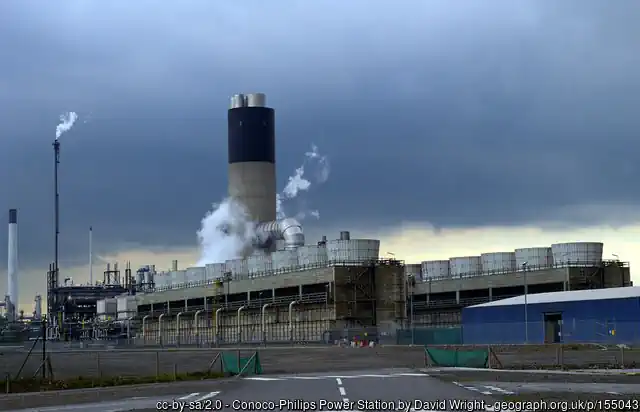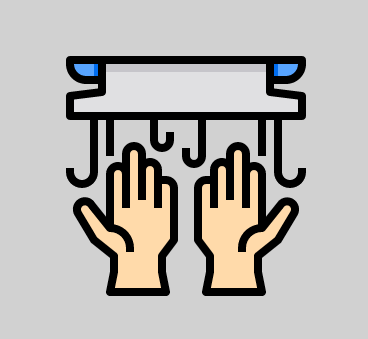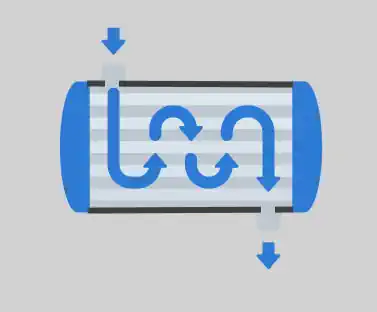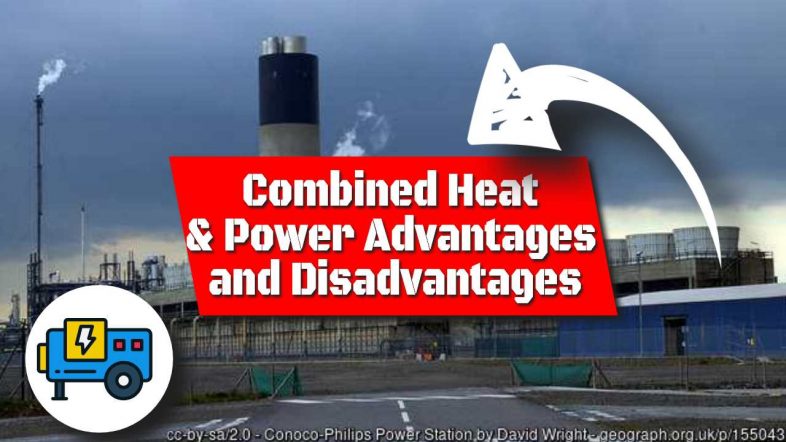Combined heat and power advantages and disadvantages are now under the spotlight like never before. This comes from the recent realisation that producing renewable energy alone will not be enough to fully abate climate change and avoid global damage.
This article discusses the pros and cons of this type of system.
Read on for our perspective on the CHP pros and cons debate:
On This Page:
- Economic Viability of CHP
- Combined Heat & Power
- Advantages of Combined Heat and Power
- Disadvantages of Combined Heat and Power
- Advantages of Combined Heat and Power
- Economic Viability of CHP
- CHP and District Energy
- High-Efficiency Turbines for CHP
- HIGH POWER TO HEAT RATIO CHP SYSTEMS
- Packaged CHP System Benefits
- Micro CHP – Cogeneration Systems
What is Combined Heat and Power
A combined heat and power (CHP) system, or “cogeneration”, is the use of a heat engine or power station to simultaneously generate electricity and heat (usually as steam or hot water) which is also used.
Hospitals, universities, manufacturers and other large electric users have found that producing electricity and usable steam (collectively, combined heat and power) in their own internal power systems may provide them substantial economic and operational benefits.
Add a local Energy from Waste (EfW) (e.g. Municipal Waste Incinerator) plant into the equation and local heat users such as homes, schools and offices, and the cost of the CHP energy to users can easily be normal domestic electricity and natural gas rates.
However, potential CHP users need economic, financial and legal guidance in efficiently steering these CHP projects to completion.
Nevertheless, a report issued by Tennessee-based Oak Ridge National Laboratory has named combined-heat-and-power (CHP) solutions as:
“one of the most promising options to increase energy efficiency in the United States.”
CHP technologies, also known as cogeneration technologies, raise efficiency through the capture and utilization of waste heat produced during the power generation process.
Combined Heat and Power Advantages
CHP systems have several advantages over conventional systems.
1. Saves Money
First, they save money because they use less energy than traditional systems. Also, they save money by reducing energy losses that occur when you transfer energy from one form to another.
For example, if you heat your home with a natural gas boiler, you will lose some of the energy you could put into the home when the outward flowing gas fumes turn (condense) into steam in the vent pipe from your boiler.
Although it is not called CHP, modern condensing boilers do use a form of a CHP system by collecting the hot water droplets while still inside the boiler and also with them the heat of condensation is also used to warm your home. By increasing efficiency and managing costs, society Increases the resiliency of our energy infrastructure by limiting congestion and offsetting transmission losses
2. Uses Less Fuel
This allows CHP systems to use less fuel than would be required to operate separate heating and power systems. Despite the fact that CHP is a proven and effective source of energy, the report, titled “CHP: effective energy solutions for a sustainable future,” said CHP technologies remain one of the most underutilized sources of energy in the country.
The use of mainframe gas turbines for power generation has increased in recent years and is likely to continue to increase. The proportion of power generation using combined heat and power is also growing mainly due to efficiency improvements and environmental benefits.

cc-by-sa/2.0 – © David Wright – geograph.org.uk/p/155043
3. Helps Maintain Optimal Living Space Temperatures
Maintaining optimal building temperatures is not only key to tenant comfort and productivity but also improves the efficiency of energy production, reduces utility costs, and decreases carbon emissions.
Combined heat and power (CHP), or cogeneration, is the one technology that can hit the mark on all these needs.
4. May Help to Cushion Price Rises
The waste heat cost is less prone to rapid price rises than natural gas (NG) and electrical energy bills.
More Combined Heat and Power Pros
5. CHP Can Make More Efficient Use of Scarce Renewable Energy
Combined heat and power (CHP) systems use energy from multiple sources to produce electricity. CHP systems that produce hot water from renewable energy sources it is a form of renewable energy.
A renewable CHP and power system can be built using a variety of green sources, including biomass, solar, wind, hydroelectricity, geothermal, nuclear and landfill gas. The biggest of the efficiency benefits comes from using a renewable energy source.
6. Non Renewable Fuels also Benefit from CHP
 But CHP sourced from fossil fuels such as NG, coal, oil etc., are still worthwhile as they use heat that would otherwise be sent to a cooling tower or another cooling device. The purpose of these is simple to cool the water that keeps the generator from overheating.
But CHP sourced from fossil fuels such as NG, coal, oil etc., are still worthwhile as they use heat that would otherwise be sent to a cooling tower or another cooling device. The purpose of these is simple to cool the water that keeps the generator from overheating.
In cooling systems which include those huge cooling towers at large power stations, the heat is sent into the surrounding environment without achieving any useful purpose.
In a CHP system instead of warming the air around the power station or generator, the cooling is done via heat transfer into hot water pipes through which it is pumped to homes and businesses and, for example, is used to heat central heating radiators.
A typical CHP system has a gas turbine generator and an integrated heat recovery steam generator and those increase the energy efficiency.
Gas Turbine with CHP
Cogeneration systems using CHP convert:
- the engine's mechanical energy into electrical energy, while
- the CHP power system's heat recovery steam generator turns the thermal energy into hot water or steam for use in the process, with any excess sent out to heat industries, homes, and businesses.
A CHP System Reduces the Amount of Fuel Needed
The gas turbine can also be used to heat the building that houses the power plant if it uses biogas or biomethane to generate energy.
The CHP system lowers the quantity of fuel used to run the plant, increasing its efficiency.

It Reduces the Carbon Dioxide Released into the Atmosphere
CHP systems can also reduce the amount of carbon dioxide released into the atmosphere. CHP does not contribute to the pollution that occurs when electricity is generated by burning fossil fuels.
Thermal Energy Production Can Heat Homes
In some cases, the heat from the gas turbine can be used to heat water for domestic purposes.
CHP Helps Keep Costs Down
Another benefit of a CHP system is that it can help to reduce the cost of electricity. It helps to offset the cost of operating the plant, which is passed on to customers.
CHP Installation Incentives for Businesses
 Combined heat and power systems are becoming increasingly popular because of their potential to reduce costs and emissions. Many governments are offering incentives to encourage the installation of these systems.
Combined heat and power systems are becoming increasingly popular because of their potential to reduce costs and emissions. Many governments are offering incentives to encourage the installation of these systems.
It avoids distribution and transmission losses. Environmental benefits — less fuel is required to produce the energy output and because distribution losses and transmission losses are avoided, CHP systems reduce greenhouse gas emissions as well as other pollutants.
Financial benefits: CHP systems reduce energy costs and can deliver savings of up to 40% while offering a permanent reduction in energy costs.
On balance, CHP systems are a great alternative to traditional systems. They are cheaper, easier to maintain, and more predictable.
Disadvantages of Combined Heat and Power
There are also disadvantages to using a CHP system.
1. It takes longer to build a CHP system
One disadvantage is that it takes longer to build a CHP system than it does to build a traditional system.
2. The initial cost of installing a CHP system is high
Another downside is that installing a CHP system may be more expensive than installing a regular system. However, during the first few years, when any loans taken out to pay for the CHP equipment are paid back by the savings, the costs of thermal energy normally drop dramatically.
3. More expensive to maintain
Traditional systems are also more expensive to maintain than CHP systems. Because CHP systems have more moving parts than typical systems, this is the case. To keep these moving elements from breaking down, they must be maintained.
Furthermore, because CHP systems operate at a higher temperature than typical systems, they require more regular maintenance.
Economic Viability of CHP – Combined Heat and Power
In high-density areas where the necessary heat-insulated hot water pipelines can be installed relatively cheaply between the waste heat source (AD plant, conventional power station, incinerator, or landfill gas EfW plant) and the users, the economic benefits of CHP can be significant.
For example, in the Data Center Sector, the usage of CHP technology is a real and feasible consideration for reducing greenhouse gas (GHG) emissions.
It joins a number of other initiatives, including a practical path for reducing greenhouse gas emissions in existing data centres and building net-zero GHG new data centres by 2030.
A recent conference looked at the huge savings in energy expenditures, CO2 emissions, and carbon taxes that CHP technology can bring, as well as the security and reliability of power that on-site power generation can provide.
CHP is an excellent thermal energy solution for enterprises with high energy demands, notably in Ireland.
Electricity costs for major industrial and commercial clients in that country are among the highest in Europe. The exploitation of this unused energy source would lower total energy costs.
Manufacturers Recognise the Advantages of Combined Heat and Power

According to a new poll by Aggreko, UK firms are increasingly recognising the benefits and possibilities of combined heat and power (CHP) technology post-pandemic.
Over 90% of respondents to a survey conducted by a temporary equipment supplier agreed that they could see the possibility of CHP in their organisations by 2020, confirming the technology's potential.
From a single fuel source, CHP facilities can supply on-site electric generation, heating, and cooling. Cogeneration is another name for this power generation technique. The waste heat produced by conventional power plants is not always usable.
CHP and District Energy
CHP units effectively reduce a building’s energy consumption, improving atmospheric and surface-level conservation.
Individuals can integrate the technology with renewable electricity, eliminating heating, ventilation, and air conditioning (HVAC) pollution.
A larger proportion of the inherent energy in the fuel is converted into electricity or useful heat in a “combined heat and power” plant (“CHP”).
High-Efficiency CHP
CHP is a fuel neutral technology and gas engines can accommodate low-carbon natural gas, renewable fuels such as biogas, biomethane, syngas, sewage gas, and hydrogen as a future fuel. Hybrid CHP systems that combine low carbon and renewable fuels are also possible.
High Power to Heat Ratio CHP Installations

Industrial manufacturing CHP plants allow industries that consume large amounts of energy to produce their own stable supply of electrical power while increasing efficiency and decreasing fuel consumption.
CHP installations can power a wide variety of industrial and manufacturing processes and produce additional useful energy, such as high-pressure steam, process heat, mechanical energy, or electricity.
When the heat is not needed, no electric power would be generated using energy-efficient building controls. (r-CHP) residential or commercial low-temperature heating; electric power is primary. This is usually an electric generator (for example a large central steam turbine, or smaller gas turbine), which releases high quantities of relatively low-temperature waste heat. While the traditional method of separately producing usable heat and power has a typical combined efficiency of 45%, CHP systems can operate at efficiency levels as high as 80%.
Packaged CHP System Benefits
To fulfil the NHS's carbon reduction target, the whole carbon footprint must be reduced. CHP units installed by Centrica business solutions helped cut energy expenditures. Since CHP's inception in 2017, Southend Hospital has reaped the financial benefits.
CHP is a cost-effective, energy-efficient instrument that creates electricity while recovering heat that would otherwise be squandered as thermal energy.
Increasing energy efficiency and cost control Limiting congestion and minimising transmission losses improves the reliability of our energy infrastructure.
Micro CHP Cogeneration Systems
CHP systems are proving to be an efficient and effective approach to reduce waste. A cogeneration system, often known as a CHP system, is a basic concept that simply requires a heat exchanger at each end of a heat-insulated pipe.
Micro combined heat and power, also known as micro-CHP, chp, or MCHP, is a type of cogeneration that applies to a single/multi-family home or a small office building with a capacity of up to 50 kW.
A photovoltaic thermal hybrid solar collector can achieve this, and concentrated photovoltaics and thermal (CPVT), often known as combined heat and power solar, is another possibility (CHAPS). This is a cogeneration technique that produces both electricity and heat in the same module and is utilised in concentrated photovoltaics.







